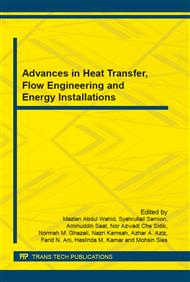p.512
p.518
p.523
p.530
p.536
p.541
p.549
p.553
p.563
Experimental Investigation of Multijunction Solar Cell Using Two Axis Solar Tracker
Abstract:
Solar cell is the most cost effective and simple device to harvest solar energy as compared to other systems. Many types of single junction solar cell are available in market but their main problem is low efficiency. This paper focuses on the performance investigation of high efficiency multijunction solar cell using two axis solar tracker. High solar concentration is needed for multijunction solar cell with accurate solar tracking to get maximum energy output. Solar tracker is based upon the astronomical algorithm of solar tracking. Tracking System consists of GPS module, AVR microcontroller, stepper motors with drive modules and some other accessories. The tracking system takes geographical location data from GPS to calculate sun position for tracking.
Info:
Periodical:
Pages:
536-540
Citation:
Online since:
January 2016
Authors:
Keywords:
Price:
Сopyright:
© 2016 Trans Tech Publications Ltd. All Rights Reserved
Share:
Citation:


